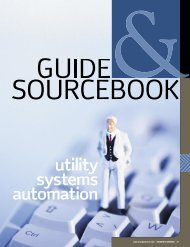asset management
asset management
asset management
You also want an ePaper? Increase the reach of your titles
YUMPU automatically turns print PDFs into web optimized ePapers that Google loves.
A D V E R T I S E M E N T<br />
[ C A S E S T U D Y ]<br />
Westar Energy Proves Knowledge is Power<br />
POSITIVE CHANGE<br />
Westar Energy, the largest electric energy provider in Kansas, is<br />
dedicated to providing its 650,000 customers with high quality<br />
service at below average prices. Although Westar Energy has<br />
received national recognition for maintenance and performance,<br />
the utility’s seven energy centers were constrained by homegrown<br />
mainframe information systems and reactive maintenance<br />
practices. The Company’s executives knew they could do better.<br />
They set out to grow best-in-class maintenance organizations.<br />
A select team of Westar Energy employees was created as a task<br />
force to plan the foundation for positive change. Goal-driven metrics<br />
were identified, and a new Enterprise Asset Management (EAM) system<br />
was chosen and put into place. David Walter, Engineer VI in Westar<br />
Energy’s “Engineering Reliability” department explains, “If you can<br />
measure against a goal, you can fix and improve the process. Metrics<br />
force the issue and fuel an environment of continuous improvement.”<br />
The value of this strategy became immediately apparent, and the utility<br />
expanded the EAM initiative over the next four years to include additional<br />
processes, modules, reports, and increasingly aggressive goals.<br />
THE SOLUTION<br />
In 1998, Westar Energy chose SPL WorldGroup’s Enterprise Asset<br />
and Work Management (SPL EAM, formerly known as the Synergen<br />
Series®), to replace its legacy systems. SPL EAM was selected<br />
over other vendor solutions because of its user friendliness, robust<br />
features, configurability, and low overall total cost of ownership. The<br />
application would enable standardized work practices and data formats<br />
across Westar Energy’s seven energy centers.<br />
In less than two years, all sites were live on SPL EAM and maintenance<br />
managers were ready to implement a new, three-pronged<br />
approach to power plant maintenance:<br />
1. Improve Planning and Scheduling: Westar Energy wanted<br />
to modernize its maintenance system and organization by<br />
implementing best practice work planning and scheduling.<br />
2. Integrate Maintenance and Supply Chain: Purchasing<br />
and inventory organizations would be a more closely<br />
integrated partner in support of maintenance efforts.<br />
3. Measure and Improve Results: The utility sought to<br />
increase accessibility of information and better manage<br />
results by establishing goals and performance metrics.<br />
Westar Energy’s greatest challenge involved the cultural/<br />
behavioral and procedural changes necessary to successfully<br />
implement goal-driven practices. Metrics would determine where<br />
weaknesses existed, and procedures would be implemented to<br />
improve performance. Personnel throughout the fleet were motivated<br />
to work together to overcome each limitation in pursuit of<br />
maintenance excellence.<br />
MEASURING SUCCESS<br />
SPL EAM serves Westar Energy work <strong>management</strong> needs, in the<br />
areas of work and project planning, scheduling, permitting, timekeep-<br />
ing, purchasing, inventory control, and more. Every transaction that<br />
occurs in a power plant is sent to the general ledger via SPL EAM.<br />
Using the data collected and stored in SPL EAM, Westar Energy<br />
executives are now able to track and measure performance and chart<br />
progress toward maintenance practice improvement goals.<br />
Westar Energy’s plant maintenance departments perform<br />
approximately 30,000 work order tasks per year and generate about<br />
17,000 work schedules annually. The utility has met several of its<br />
“This year we met our goal for the<br />
percentage of hours spent on predictive<br />
and preventive activities, and we will<br />
very likely raise the bar next year.”<br />
goals in transitioning from reactive maintenance to a more planned<br />
and scheduled environment, and was able to build upon its success<br />
by measuring and improving work package planning, advance<br />
scheduling, schedule compliance, planned materials percentages,<br />
and related metrics. According to Walter, “About 18% of our maintenance<br />
work is currently unscheduled. Recognition of, and visibility<br />
into, the inefficiency of unscheduled work is helping us to change<br />
our work culture.” He adds, “This year we met our goal for the percentage<br />
of hours spent on predictive and preventive activities, and<br />
we will very likely raise the bar next year.”<br />
Westar Energy’s materials and purchasing organizations also<br />
tended to be reactive. With metrics this is changing. The utility<br />
stocks nearly 60,000 SKUs in its warehouses and executes more<br />
than 17,000 purchase orders each year. Objectives such as reduced<br />
inventory, increased use of blanket purchase orders, achieving consignment<br />
goals, and meeting required dates are measured. Westar<br />
Energy’s Generation Business Analyst, Sue Gordon says, “The<br />
internal lead time from requisition generation to purchase order<br />
issue has been dramatically reduced. Replacing previously arduous<br />
tasks with the capabilities of SPL EAM made this possible.”<br />
EFFICIENCY OF INFORMATION BREEDS SUCCESS<br />
Walter concludes, “We’ve always felt that our maintenance organizations<br />
were effective. Today though, with the help of the SPL EAM<br />
solution and a strong focus on continual improvement in our work<br />
<strong>management</strong> process, we are even better. We are far more efficient in<br />
collecting intelligence now. Having ‘exploded’ in this respect is proving<br />
invaluable to our efforts. We now have the ability to continuously evaluate<br />
our progress and raise the standard as we meet our goals. The end<br />
result is a more efficient operation, more reliable service, and greater<br />
customer satisfaction.”<br />
www.energybizmag.com ENERGYBIZ MAGAZINE 55



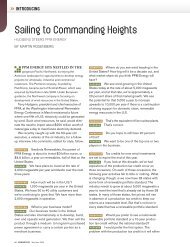
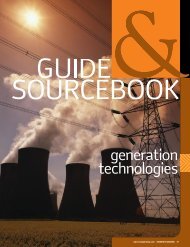
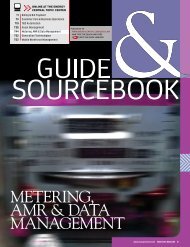

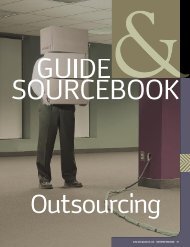








![View From the Trenches [PDF]](https://img.yumpu.com/18854438/1/190x252/view-from-the-trenches-pdf.jpg?quality=85)
